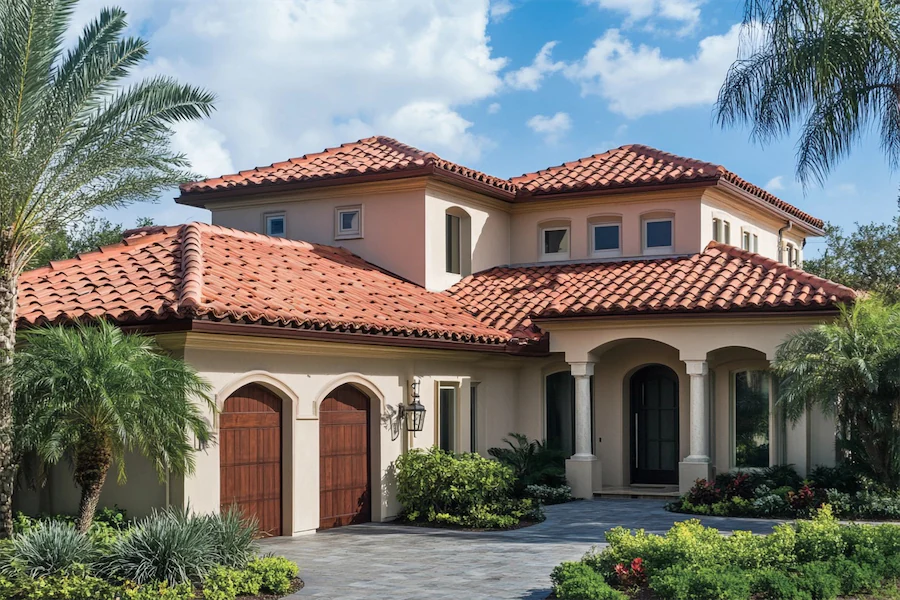Contemporary architecture embraces innovative and diverse roof designs that blend aesthetics with functionality. These roofs often feature clean lines, unconventional shapes, and modern materials, contributing to the unique character of contemporary homes.
Key Features of Contemporary Roofs
- Flat and Low-Pitched Roofs: Flat roofs create long horizontal planes, reminiscent of the broad horizon line seen often in nature. They’re simple in form and function, and are a good example of the modernist principle of “clean lines.”
- Butterfly Roofs: This design consists of two roof surfaces sloping downwards to a central valley, forming a V-shape. Beyond its striking visual impact, the butterfly roof was practical for rainwater harvesting and allowed for larger windows, enhancing natural light within the interior spaces.
- Mono-Pitched (Shed) Roofs: Featuring a single sloping surface, mono-pitched roofs offer a minimalist and cost-effective solution. They facilitate efficient water drainage and can be oriented to optimize solar panel installation.
- Green Roofs: Incorporating vegetation, green roofs provide environmental benefits such as improved insulation, stormwater management, and reduced urban heat island effect. They also offer aesthetic appeal and can serve as recreational spaces.
Materials Used in Contemporary Roofs
The choice of materials plays a crucial role in the performance and appearance of contemporary roofs:
- Metal Roofing: Sleek and contemporary, metal roofs are durable and energy-efficient. Options include standing seam, metal tiles, or metal shingles.
- Synthetic Roofing Materials: Modern roof materials also include new aesthetics, like metal roofing. Modern roofs can also create an improvement on traditional materials such as a sod roof which, rather than making up the entire roof, can be worked in with other modern roof materials to create a green rooftop oasis.
- Solar Shingles: Integrating photovoltaic cells, solar shingles generate electricity while serving as a functional roofing material, aligning with sustainable design principles.
Considerations When Choosing a Contemporary Roof
When selecting a contemporary roof design, consider the following factors:
- Climate Adaptation: Flat and low-pitched roofs are best suited for arid climates where water drainage is less of a concern. In regions with heavy rainfall or snowfall, additional measures, such as enhanced drainage systems, are necessary to prevent water accumulation or damage.
- Material Selection: Opt for materials that offer durability and align with the contemporary aesthetic, such as metal, concrete, or synthetic composites. Consider the local climate and environmental impact when choosing materials.
- Maintenance Requirements: Some modern roofing materials, like metal and synthetic options, require less maintenance compared to traditional materials. However, features like green roofs necessitate regular upkeep to ensure plant health and structural integrity.
Conclusion
Contemporary roof designs offer a harmonious blend of form and function, reflecting the evolution of architectural styles to meet modern needs and preferences. By understanding the key features, material options, and considerations associated with contemporary roofs, homeowners and builders can make informed decisions that enhance both the aesthetic appeal and performance of their structures.
